This will be the last time I go into detail about capacitors.
If I don’t stop now, every blog post I write will be about capacitors, and I don’t want to be seen as someone with no other tricks up his sleeve.
Lately, I’ve been seeing people, especially on online auctions, selling capacitors at high prices, claiming “the best sound quality” without even knowing their true nature.
Some even go so far as to say that installing these capacitors on a cheap guitar will make it sound as good as a Gibson or Fender Custom Shop guitar.
It’s so ridiculous I can’t even read it, yet I’m amazed that there are people who fall for it and spend a fortune.
For this bonus edition, I’m going to introduce some capacitors from my parts shelf.
These are capacitors that are not only rare to see, but also incredibly hard to obtain—practically the stuff of urban legends.
Let’s start with these:
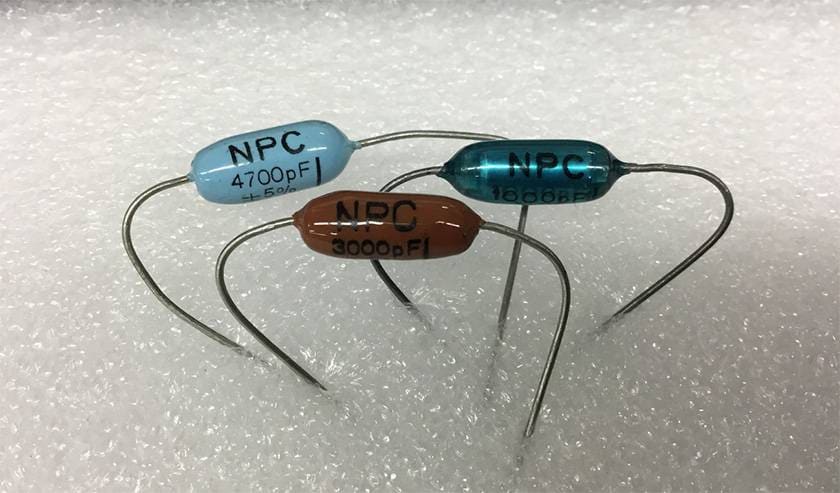
Three Types of Styrofoam Capacitors by NPC, Made in West Germany
When I first got these, I thought they were a variant of ERO capacitors, but it seems they’re different.
What’s certain is that they’re made in West Germany. There are other types that ERO doesn’t have, and all of them are marked with the NPC logo.
Here’s another example.
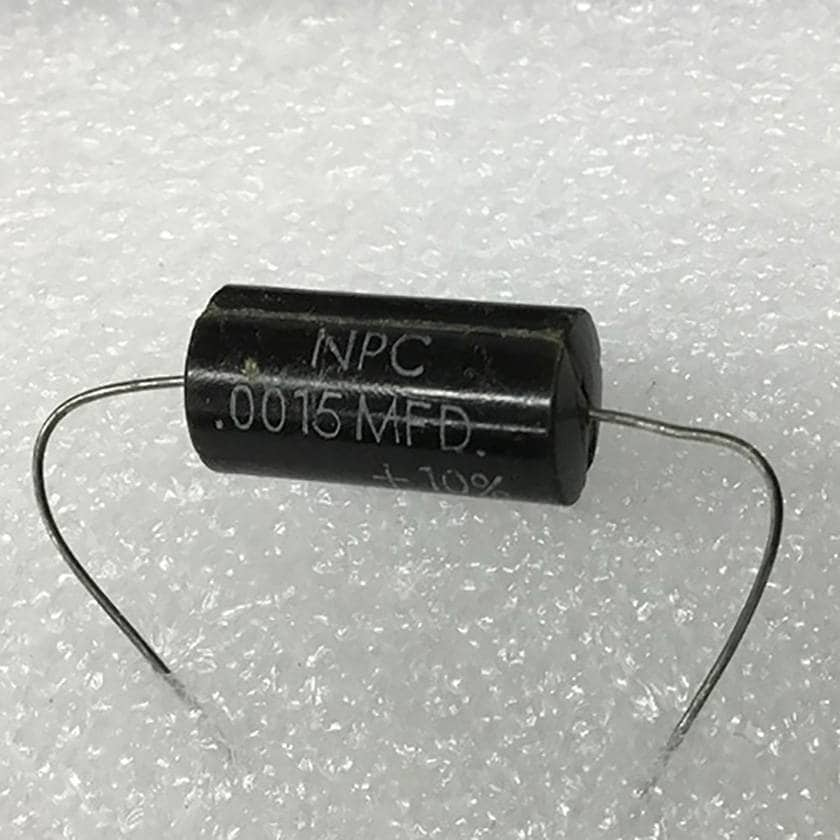
This is a paper capacitor, but it’s solidly encased in resin.
The capacitor I use in my main guitar is this one. After trying out many options, I finally settled on this one.
I had tried out Orange Drops and VitaminQs, but the moment I swapped it in and played my guitar, I knew this was the sound I had been looking for.
I’ve never seen these sold in Japan. Probably only a few people in Japan, including myself, own one.
Next up is this.
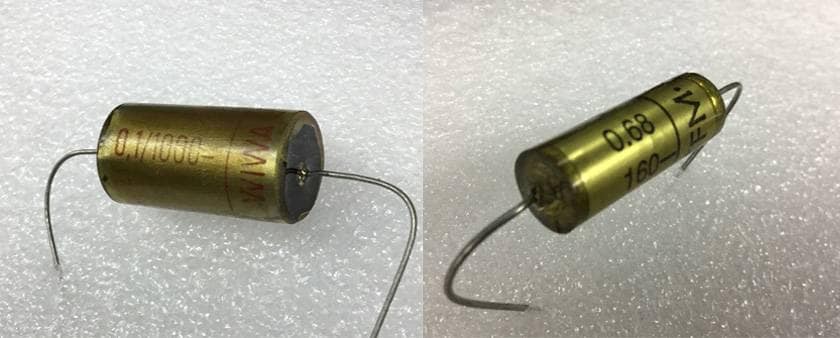
You might be wondering, “What’s so rare about this?”
I get it.
It looks a lot like an ERO MKT-1813, but it’s actually a WIMA capacitor.
WIMA is known for their high-quality multilayer film capacitors, usually in red (though they also come in yellow, blue, and clear).
They used to make these axial-type film capacitors too.
What’s unique about this one is that it’s encased in transparent epoxy resin, with the part number and brand name printed on a piece of paper wrapped around the inside, so you can see everything.
You can observe the twists in the film and foil, and even the connections to the lead wires.
Of course, this is an ultra-rare item.
Now, onto a masterpiece of Japanese manufacturing:
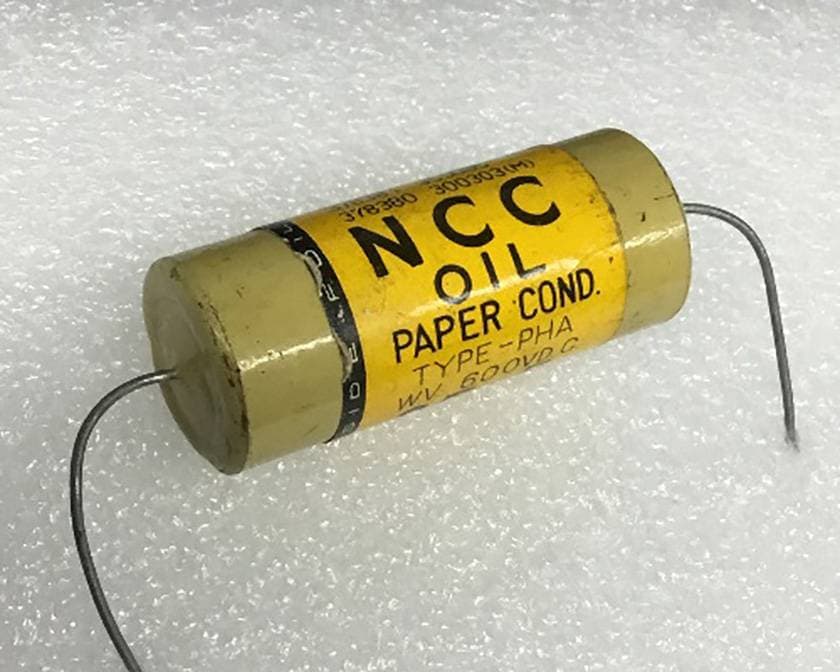
This is an NCC (Matsuo Electric) early oil capacitor.
These were apparently circulated in the 1950s and 60s, but who would have thought I’d own an unused, boxed, brand-new one today—not even Buddha himself could have guessed that.
However, I still occasionally see these early yellow (ochre-colored) models pop up on online auctions. But most of them are salvaged from junk equipment, not unused stock held by someone who built tube amps.
Here’s another rare one:
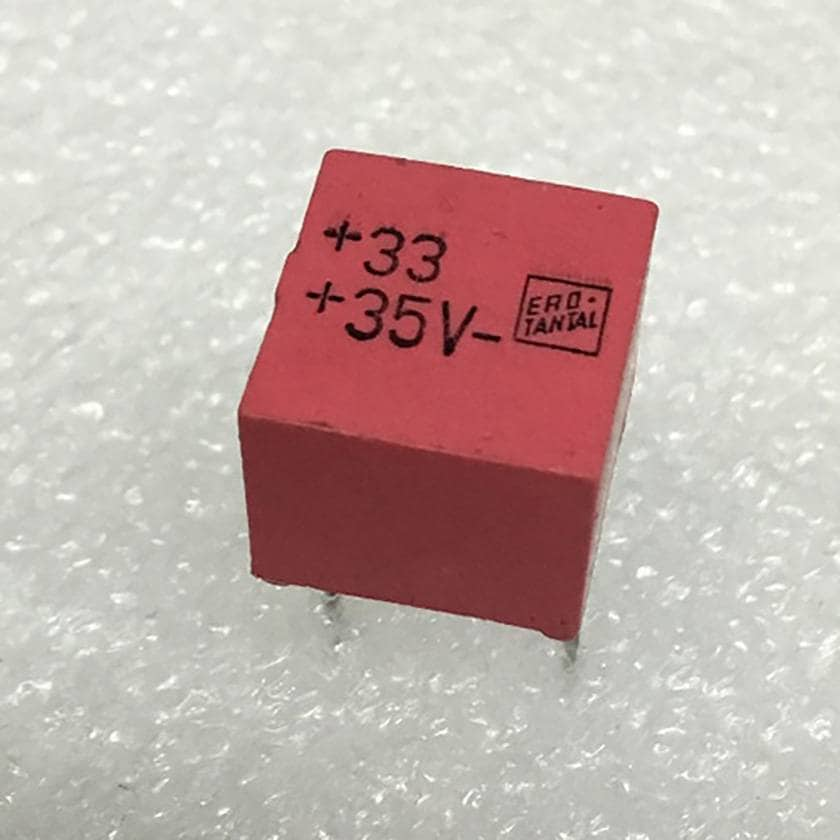
ERO-TANTAL from Germany
This is a tantalum capacitor from ERO, and it’s in a plastic rectangular casing!
If you look closely, you’ll see ‘TANTAL’ written below the ERO logo.
I was shocked and couldn’t believe it when I first saw this. It’s clearly not a solid tantalum capacitor.
So it must be something equivalent to a hermetically sealed tantalum capacitor, encased in this plastic shell.
I knew about electrolytic capacitors encased in cylindrical plastic, but this was new to me.
ERO never ceases to amaze.
Let’s keep going.
Next is a film capacitor from TAITSU, a Japanese company.
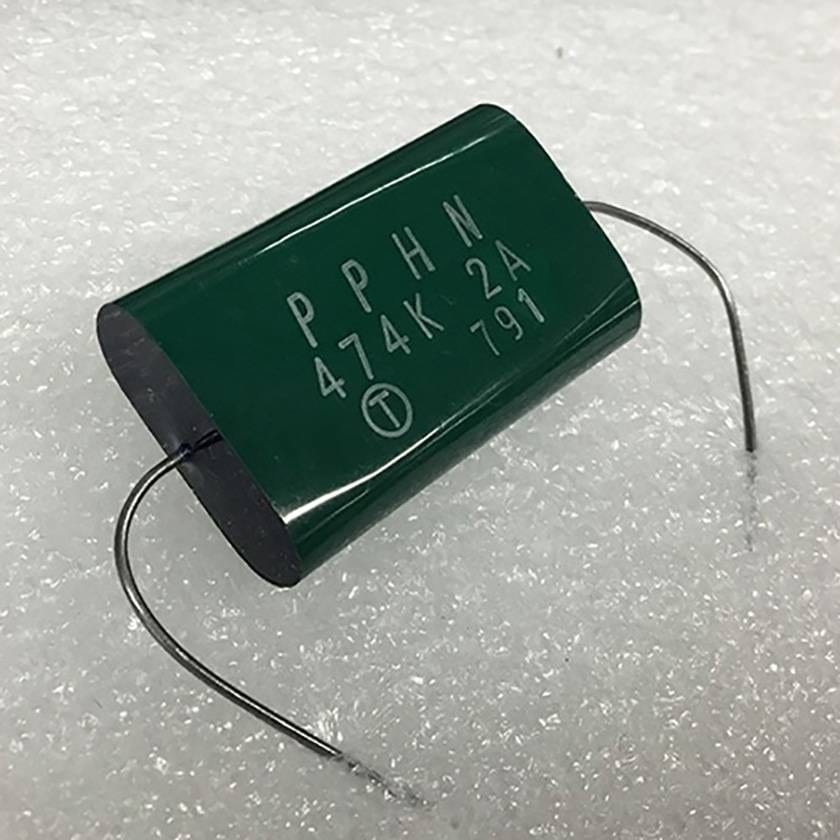
It might look like an ordinary film capacitor.
TAITSU is the company that made the famous λ-CON film capacitors for speaker networks.
They were the first in Japan to successfully mass-produce polyethylene terephthalate film capacitors.
Their products are still highly reliable, even being used in medical devices today.
This is an earlier model and not something you can easily find.
Though it looks like a standard film capacitor, its size seemed a bit large for its capacitance, and it turned out to be a polypropylene film capacitor. It has excellent high-frequency characteristics, can handle high currents, and is extremely resistant to humidity and aging—naturally, it’s also quite expensive.
I found this by chance at a junk shop in Akihabara, and of course, I discreetly gathered them all and bought them in one go.
Next, I have something from 60 years ago.
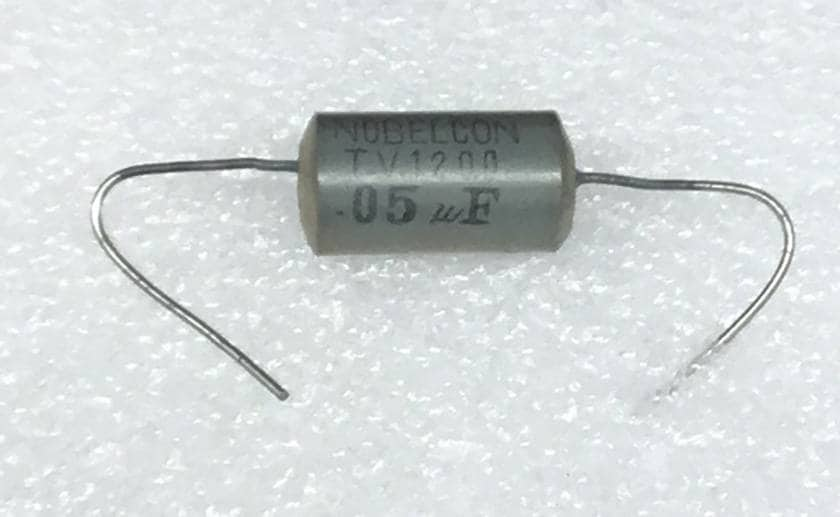
NOBELCON Paper Capacitor
Sony had NCC (Matsuo Electric), and SANSUI had NOBELCON! Back in the day, radio enthusiasts might have been buying these up left and right... or maybe not.
In the 1950s, even radios used tubes, and there were always one or two experts in every town or village who knew how to build their own.
This NOBELCON capacitor is a legendary relic that those experts might have sought after.
Occasionally, you can find it on a certain online auction, but I’ve never seen unused ones for sale.
I only have a few unused ones left myself.
Despite being 60 years old, they still work perfectly for high-voltage applications.
The specified withstand voltage is 1200V.
I once broke one open to examine the interior, and it was a hermetically sealed structure using a ceramic tube.
Alongside NCC, this was a capacitor that dominated in the Showa era.
With a capacitance of 0.05 uF and an withstand voltage of 1200V, it’s practically begging to be used in a Stratocaster! If it were 0.02 uF, I’d definitely be using it in a Marshall amp’s coupling circuit.
So, how about it? Have you seen any of the capacitors I’ve introduced here before?
There are also plenty of rare and unusual resistors and diodes like these.
Some people say that parts don’t affect the sound, but I think that’s highly disrespectful to the manufacturers who work hard every day to create high-performance, great-sounding products.
For example, every resistor in a Mesa/Boogie amp is a USA-made DALE CMF-60 (1/2W) metal film resistor.
Every coupling and decoupling film capacitor is a Sprague Orange Drop—no exceptions. They’re particular about it.
If you care about sound, it’s only natural to care about the parts too, don’t you think?
What? You’re afraid of getting stuck in a swamp? I think it’s just right to swim around in the swamp... or is that just me?






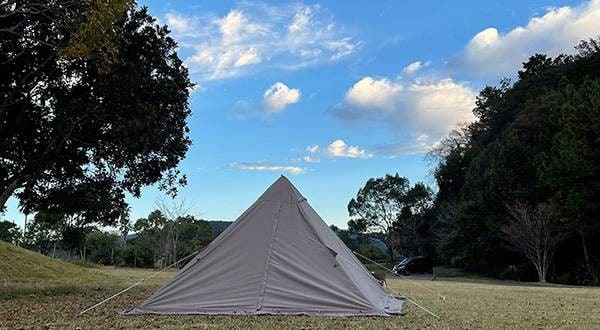
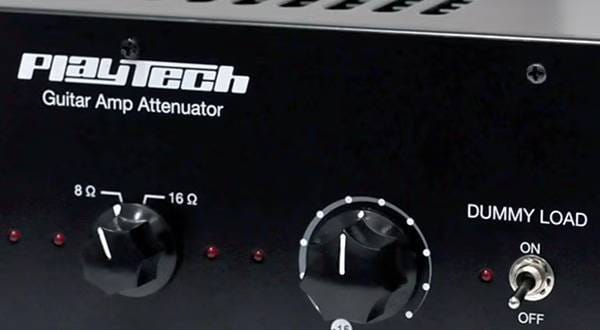
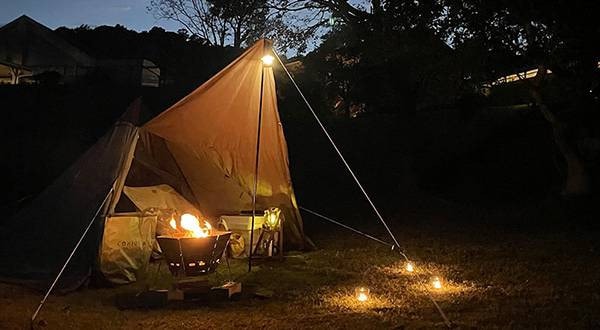
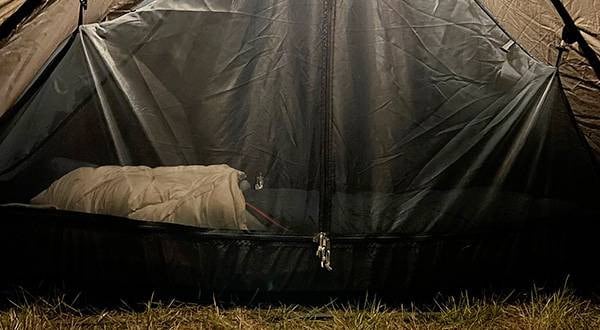

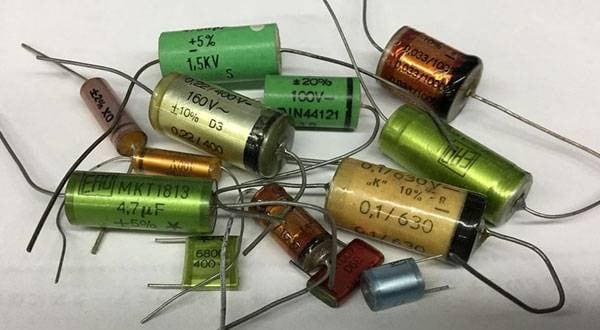
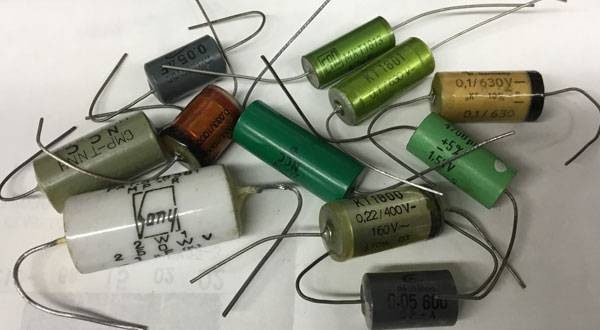
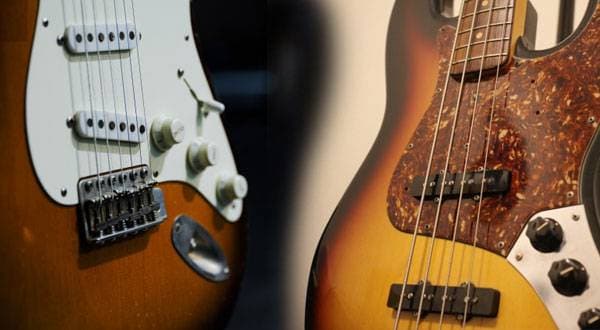
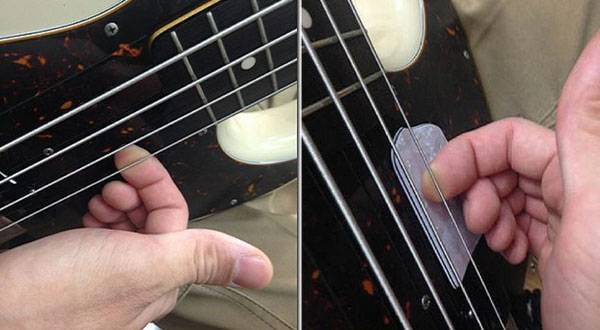
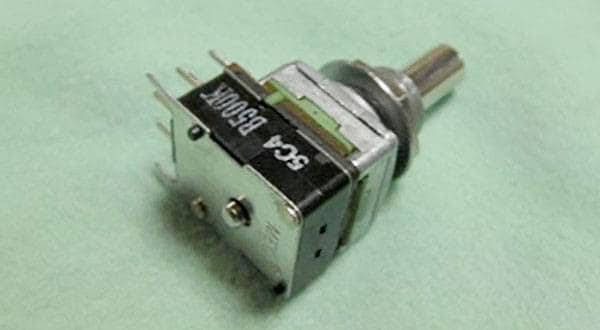
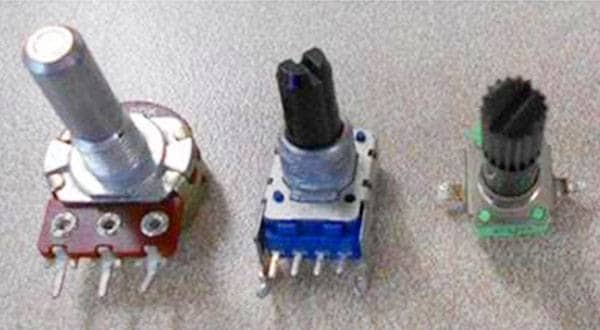
 DIY ギターメンテナンス
DIY ギターメンテナンス
 配線カスタマイズ 第1回
配線カスタマイズ 第1回
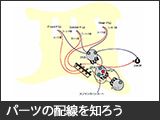 パーツの配線を知ろう
パーツの配線を知ろう
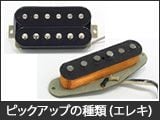 ピックアップの種類(エレキギター)
ピックアップの種類(エレキギター)
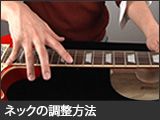 ネックの調整方法
ネックの調整方法
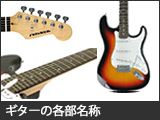 ギターの各部名称
ギターの各部名称















